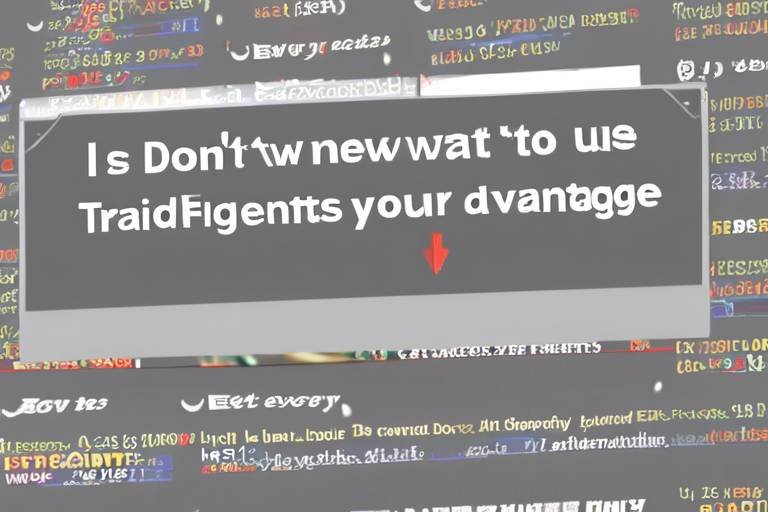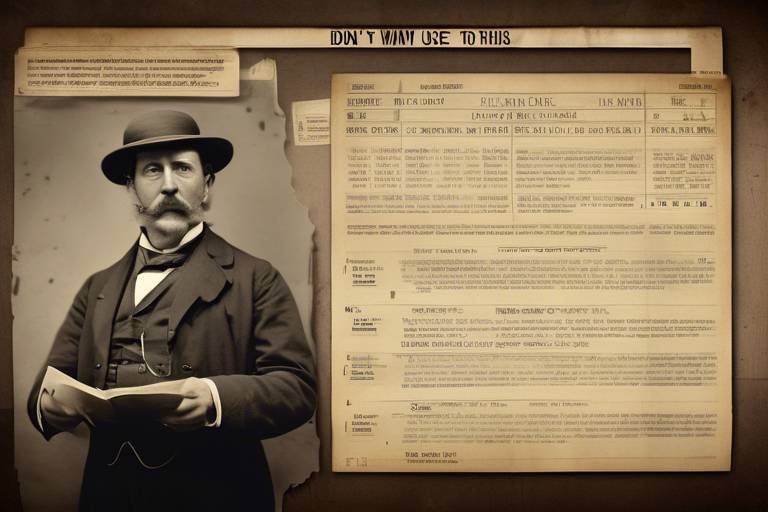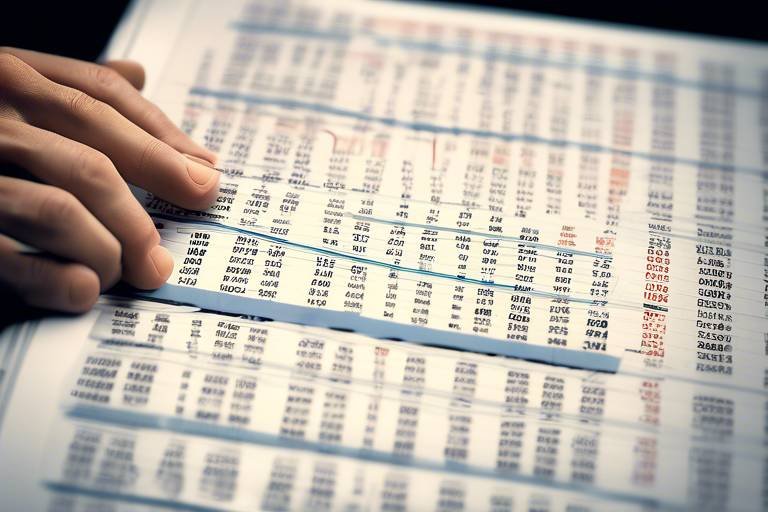How to Use Stochastic Oscillator in Your Strategy
The world of trading can often feel like a wild roller coaster, filled with ups and downs, twists and turns. But what if you had a tool that could help you navigate this chaotic ride with more confidence? Enter the Stochastic Oscillator, a powerful momentum indicator that many traders swear by. This article dives deep into the significance of the Stochastic Oscillator, revealing how you can effectively incorporate it into your trading strategy for better decision-making and enhanced market analysis.
The Stochastic Oscillator is more than just a fancy term thrown around in trading circles; it’s a vital tool that compares a security's closing price to its price range over a specific period. Think of it as a compass that helps traders identify whether a market is overbought or oversold. By understanding these conditions, traders can make more informed decisions about when to enter or exit a trade. It’s like having a sixth sense about market movements, allowing you to anticipate potential reversals before they happen.
Calculating the Stochastic Oscillator is simpler than you might think. The formula is straightforward, making it accessible for traders at all levels. The Stochastic Oscillator is calculated using the following formula:
%K (Current Close - Lowest Low) / (Highest High - Lowest Low) * 100 %D 3-day SMA of %K
Here, the Lowest Low and Highest High are determined over a specified period, typically 14 days. By applying this formula to historical price data, you can derive meaningful insights into market trends and potential reversals. It’s like piecing together a puzzle, where each calculation brings you closer to understanding the bigger picture.
The Stochastic Oscillator consists of two main lines: %K and %D. These lines are crucial for analyzing momentum and identifying potential entry and exit points in your trading strategy. Let’s break down each component:
The %K line represents the current closing price in relation to the price range over a specified period. This line provides valuable insights into market momentum and can signal potential trend reversals. Imagine you’re standing at the edge of a cliff, peering down into the valley below. The %K line gives you a clear view of where the market is heading, helping you decide whether to jump in or hold back.
On the other hand, the %D line is a moving average of the %K line. It smooths out fluctuations, offering traders a clearer view of market trends and potential trading signals. Think of the %D line as your trusted friend, always there to guide you through the noise of the market, helping you stay focused on the bigger picture.
Interpreting signals from the Stochastic Oscillator involves recognizing key patterns, such as crossovers and divergence. These patterns can indicate potential market reversals, making them essential for traders looking to make informed decisions. For example, when the %K line crosses above the %D line, it can signal a bullish trend, suggesting it might be time to buy. Conversely, if the %K line crosses below the %D line, it may indicate a bearish trend, signaling a potential sell opportunity. It’s like reading the stars to navigate your ship; understanding these signals can lead you to safer waters.
Integrating the Stochastic Oscillator into your trading strategies can significantly enhance your decision-making process. By combining it with other technical indicators and market analysis tools, you can develop a more robust approach. For instance, pairing the Stochastic Oscillator with moving averages or the Relative Strength Index (RSI) can provide a more comprehensive view of market conditions, improving the accuracy of your trading signals. It’s like having a Swiss Army knife in your trading toolkit—versatile and essential for tackling various market scenarios.
When you combine the Stochastic Oscillator with other indicators, you create a powerful synergy that can lead to better trading outcomes. By analyzing multiple indicators together, you can confirm signals and filter out false positives. This layered approach can provide a safety net, ensuring that your trading decisions are well-informed and calculated.
Before diving headfirst into the market, backtesting your trading strategy using historical data and the Stochastic Oscillator is crucial. This process allows traders to evaluate the effectiveness of their strategies, refine their approach, and build confidence in their trading decisions. It’s like rehearsing for a performance; the more you practice, the better prepared you are when the curtain rises.
- What is the best period to use for the Stochastic Oscillator? The commonly used period is 14 days, but traders can adjust it based on their trading style.
- Can the Stochastic Oscillator be used for all types of securities? Yes, it can be applied to stocks, commodities, forex, and more, making it a versatile tool.
- Is the Stochastic Oscillator reliable for predicting market trends? While it is a helpful indicator, it should be used in conjunction with other tools for better accuracy.
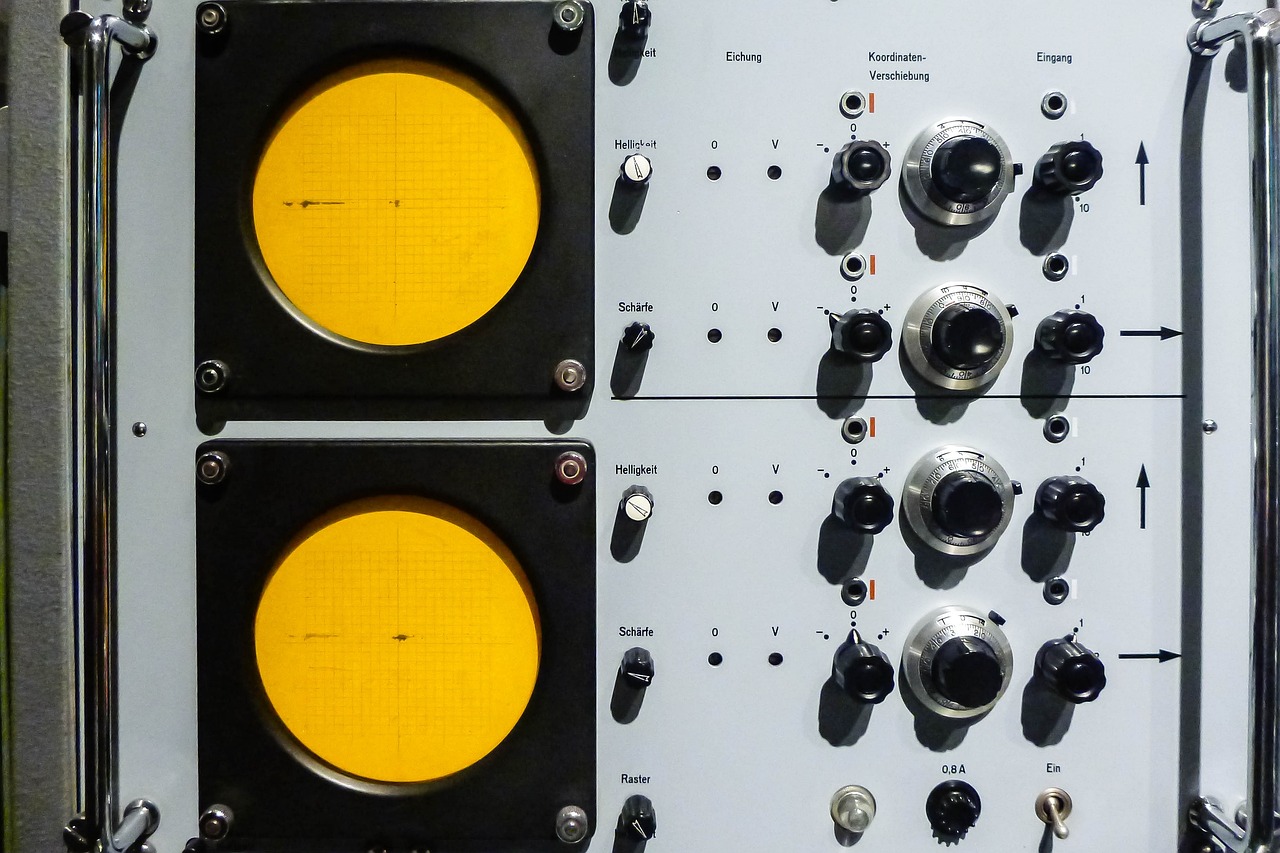
Understanding the Stochastic Oscillator
The Stochastic Oscillator is a powerful momentum indicator that traders use to gauge the strength of price movements in the market. At its core, it compares a security's closing price to its price range over a specific period, typically 14 days. This comparison helps traders identify whether a security is in an overbought or oversold condition, which are crucial signals for making trading decisions. Imagine you're trying to find the sweet spot for buying or selling a stock; the Stochastic Oscillator acts like a compass, guiding you to those critical decision points.
One of the most appealing aspects of the Stochastic Oscillator is its ability to provide insights into market momentum. When the oscillator moves above 80, it indicates that the market is potentially overbought, suggesting that a price correction might be on the horizon. Conversely, when it dips below 20, the market is considered oversold, pointing towards the possibility of a price increase. This duality makes the Stochastic Oscillator a versatile tool in a trader's arsenal.
But how does it work? The Stochastic Oscillator is composed of two lines: the %K line and the %D line. The %K line represents the current closing price relative to the price range over the specified period, while the %D line is a moving average of the %K line. This combination allows traders to see not just where the price is now but also how it has been trending over time. Understanding these lines is crucial for interpreting the signals that the oscillator provides.
In practical terms, traders often look for specific patterns when using the Stochastic Oscillator. For example, they might watch for crossovers where the %K line crosses above or below the %D line. These crossovers can signify potential entry or exit points for trades. Additionally, traders keep an eye out for divergence between the oscillator and the price action. If the price is making new highs while the oscillator is making lower highs, it could indicate a weakening trend and a potential reversal.
In summary, the Stochastic Oscillator is more than just a number; it's a valuable tool that helps traders navigate the often tumultuous waters of the financial markets. By understanding how to interpret its signals and integrate it into their trading strategies, traders can enhance their decision-making process and potentially improve their trading outcomes.
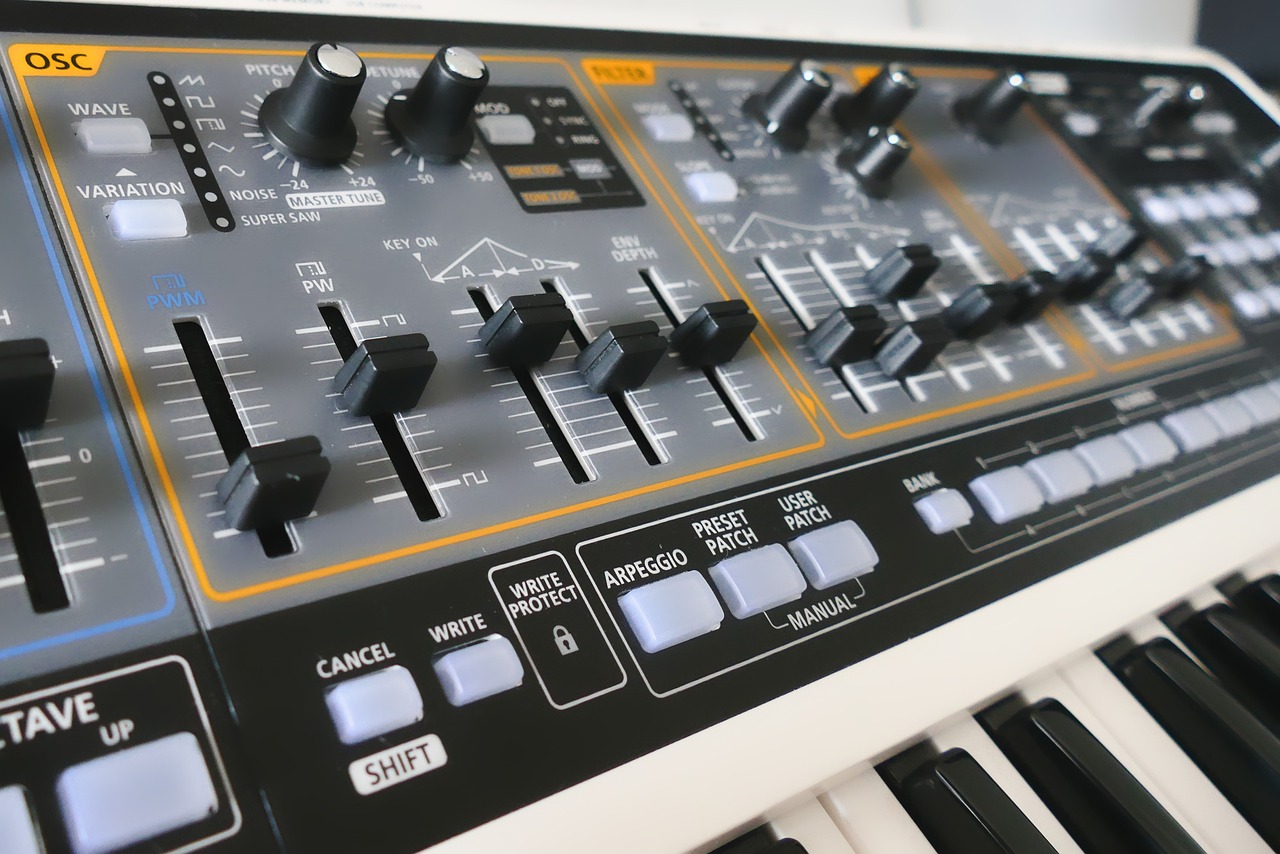
Calculating the Stochastic Oscillator
The Stochastic Oscillator is a powerful tool that traders can use to gauge market momentum. But how do we actually calculate it? The good news is that the calculation is straightforward and can be done with just a few steps. Essentially, the Stochastic Oscillator compares a security's closing price to its price range over a specified period, typically 14 days. The formula looks something like this:
%K (Current Close - Lowest Low) / (Highest High - Lowest Low) * 100
Here’s a breakdown of what each term means:
- Current Close: This is the price at which the security closed on the most recent trading day.
- Lowest Low: This refers to the lowest price of the security over the specified period.
- Highest High: This is the highest price of the security over the same period.
Once you have calculated the %K line, you can also derive the %D line, which is a moving average of the %K line. The %D line is typically calculated over a 3-day period, and it helps to smooth out the fluctuations of the %K line, providing a clearer view of market trends. The formula for %D is as follows:
%D Moving Average of %K over a specified period (usually 3 days)
To illustrate this, let’s say we are analyzing a stock over the last 14 days. If the highest price during this period was $100 and the lowest was $80, and the current closing price today is $90, you would plug these values into the %K formula:
| Calculation Step | Value |
|---|---|
| Current Close | $90 |
| Lowest Low | $80 |
| Highest High | $100 |
| %K Calculation | (90 - 80) / (100 - 80) * 100 50 |
So, in this case, the %K value would be 50. Next, to calculate the %D, you would take the average of the %K values over the last three days. This gives you a more stable indicator that can help identify trends without the noise of daily price fluctuations.
Understanding how to calculate the Stochastic Oscillator is just the first step. Once you have this data, you can start analyzing the market conditions and making informed trading decisions. Remember, like any tool in trading, the Stochastic Oscillator is most effective when combined with other indicators and a solid trading strategy.

Components of the Stochastic Oscillator
The Stochastic Oscillator is an essential tool for traders, as it provides valuable insights into market momentum through its two primary components: the %K line and the %D line. Understanding these components is crucial for effectively utilizing this indicator in your trading strategy. Think of the Stochastic Oscillator as a compass, guiding you through the often turbulent waters of market fluctuations, helping you identify when to buy or sell.
The %K line is the faster of the two lines, representing the current closing price in relation to the price range over a specified period, usually 14 periods. This line moves quickly, reacting to changes in price and providing traders with immediate insights into market momentum. When the %K line is above 80, it suggests that the security is overbought, while a reading below 20 indicates it is oversold. This quick response makes the %K line a valuable tool for spotting potential reversals.
On the other hand, the %D line serves as a smoother counterpart to the %K line. It is essentially a moving average of the %K line, typically calculated over three periods. This smoothing effect helps filter out the noise and volatility of the market, providing a clearer picture of the prevailing trend. Traders often use the interaction between these two lines to generate trading signals. For instance, a crossover of the %K line above the %D line can signal a potential buying opportunity, while a crossover below can indicate a selling opportunity.
To summarize, here’s a quick comparison of the two components:
| Component | Description | Significance |
|---|---|---|
| %K Line | Current closing price relative to the price range over a set period | Indicates overbought or oversold conditions |
| %D Line | Moving average of the %K line | Smooths fluctuations, providing clearer trend signals |
Incorporating these components into your trading strategy can significantly enhance your market analysis. As you become more familiar with the %K and %D lines, you'll find it easier to identify potential entry and exit points, ultimately leading to better decision-making. Remember, the key to successful trading lies not just in understanding these components but in knowing how to interpret the signals they provide in the context of the broader market.
- What is the best period to use for the Stochastic Oscillator?
The common period is 14, but you can adjust it based on your trading style and the asset's volatility. - Can the Stochastic Oscillator be used for all types of trading?
Yes, it can be applied to day trading, swing trading, and long-term investing, but the interpretation may vary based on the timeframe. - How do I combine the Stochastic Oscillator with other indicators?
Consider using it alongside moving averages or RSI to confirm signals and improve the accuracy of your trades.
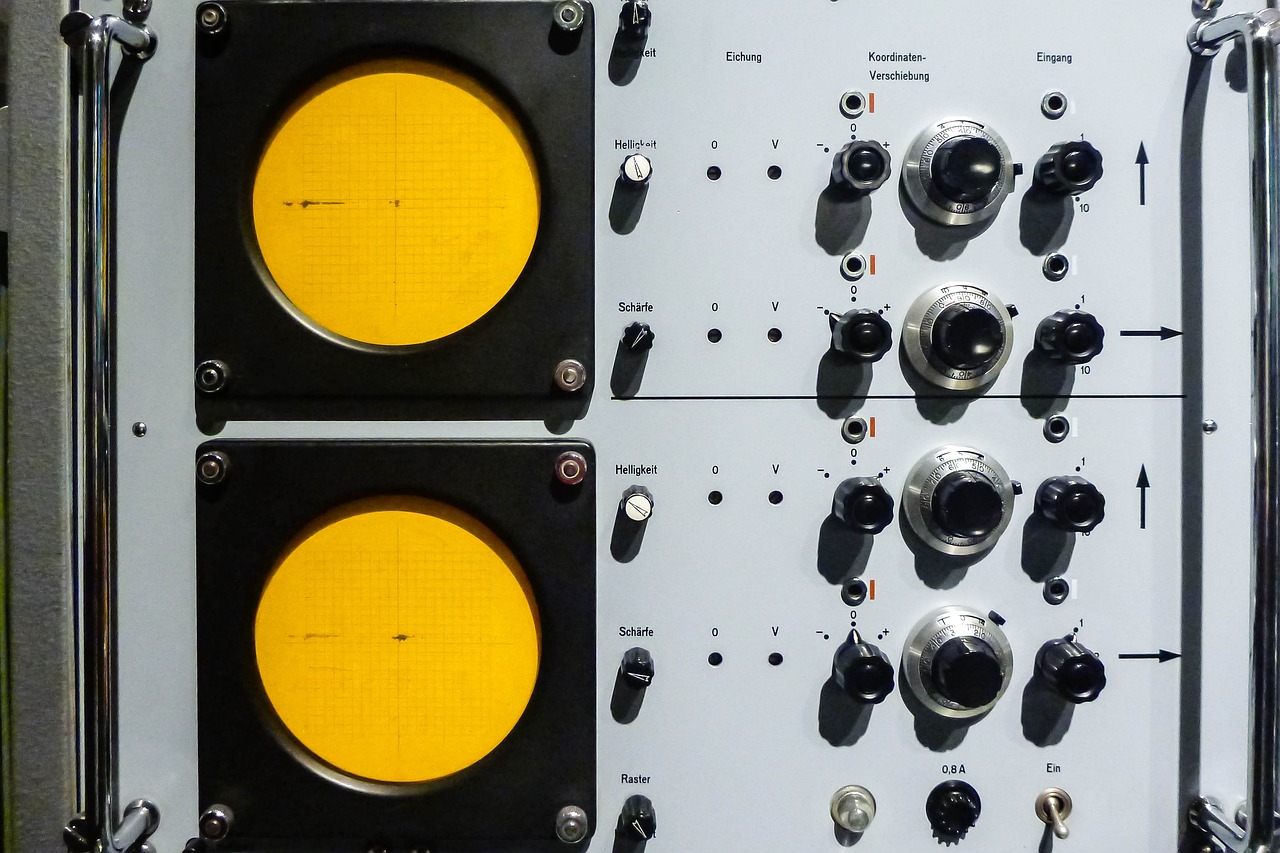
Understanding %K Line
The %K line is a crucial component of the Stochastic Oscillator, acting as the primary line that traders use to gauge market momentum. Essentially, it measures the current closing price of a security relative to its price range over a specific period, typically 14 days. This comparison helps traders identify whether a security is overbought or oversold, providing insights into potential trend reversals. Think of the %K line as a compass guiding you through the tumultuous seas of market fluctuations.
To understand the %K line better, let’s break down its formula:
%K (Current Close - Lowest Low) / (Highest High - Lowest Low) * 100
In this formula:
- Current Close: This is the latest closing price of the security.
- Lowest Low: This represents the lowest price over the specified period.
- Highest High: This indicates the highest price over the same period.
By plugging in these values, traders can derive a percentage that reflects the position of the closing price within its recent price range. A %K value above 80 typically indicates that the security is overbought, while a value below 20 suggests it is oversold. However, interpreting these values requires context; for instance, a stock can remain overbought for an extended period during a strong uptrend.
Moreover, the %K line is often displayed alongside the %D line, which is a smoothed moving average of the %K line. This combination allows traders to recognize potential buy or sell signals. When the %K line crosses above the %D line, it can signal a bullish trend, while a crossover below the %D line may indicate a bearish trend. It's like watching two dancers in perfect sync; their movements can reveal the rhythm of the market.
In summary, the %K line is more than just a number on a chart; it is a dynamic tool that, when used correctly, can enhance your trading strategy by providing timely insights into market momentum. By understanding how to read and interpret the %K line, traders can make more informed decisions, helping them navigate the complexities of the trading world.
- What is the best period to use for the %K line? While 14 periods is standard, traders often adjust this based on their trading style. Shorter periods can provide more signals, while longer periods may smooth out noise.
- Can the %K line be used in all markets? Yes, the %K line is versatile and can be applied across various markets, including stocks, forex, and commodities.
- How do I combine %K with other indicators? Many traders use %K in conjunction with indicators like moving averages or the Relative Strength Index (RSI) for a more comprehensive market analysis.
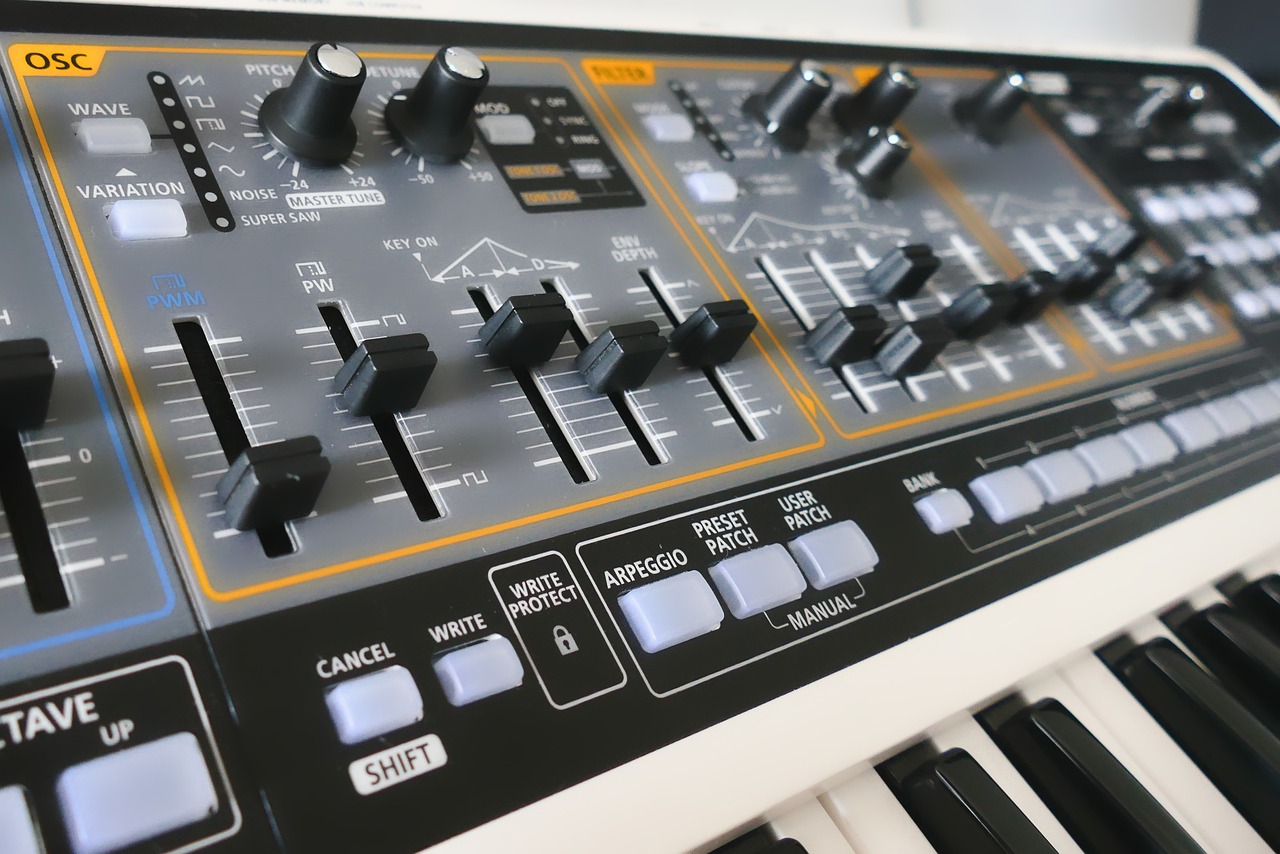
Understanding %D Line
The %D line is a crucial component of the Stochastic Oscillator, serving as a moving average of the %K line. Think of it as a gentle guide through the often chaotic landscape of market movements. While the %K line can be quite volatile, reflecting immediate price changes, the %D line smooths out these fluctuations, providing a clearer and more stable view of market trends. This smoothing effect helps traders identify potential trading signals with greater accuracy.
To put it simply, if the %K line is like a roller coaster ride, the %D line is the calm and steady hand that keeps you grounded. When traders observe the %D line crossing above or below the %K line, it can signal potential buying or selling opportunities. For example, when the %D line crosses above the %K line, it may indicate a bullish signal, suggesting that it could be a good time to buy. Conversely, if the %D line crosses below the %K line, it may suggest a bearish signal, indicating a potential time to sell.
Moreover, the %D line is often set to a default period of three days, but traders can adjust this based on their trading style and time frame. A shorter period might make the line more reactive to price changes, while a longer period can provide a more stable view of trends. This flexibility allows traders to tailor their analysis according to their strategies.
Here's a quick overview of how the %D line enhances trading decisions:
- Smoothing Effect: Reduces noise from price movements, making it easier to identify trends.
- Signal Confirmation: Acts as a confirmation tool when combined with the %K line, allowing for more reliable trading signals.
- Trend Analysis: Helps traders assess the strength of a trend, guiding them in their entry and exit points.
Ultimately, understanding the %D line is essential for traders looking to harness the power of the Stochastic Oscillator. By recognizing its patterns and signals, traders can make more informed decisions, enhancing their overall trading strategy and boosting their confidence in the market.
- What is the difference between %K and %D lines? The %K line is the primary line that reflects the current closing price relative to the price range, while the %D line is a smoothed moving average of the %K line, providing clearer signals.
- How can I adjust the %D line settings? You can customize the %D line period based on your trading style; common settings include 3, 5, or even 14 periods.
- Is the Stochastic Oscillator suitable for all trading styles? While it can be applied to various trading strategies, it works best in markets that exhibit clear trends and can be less effective in choppy or sideways markets.
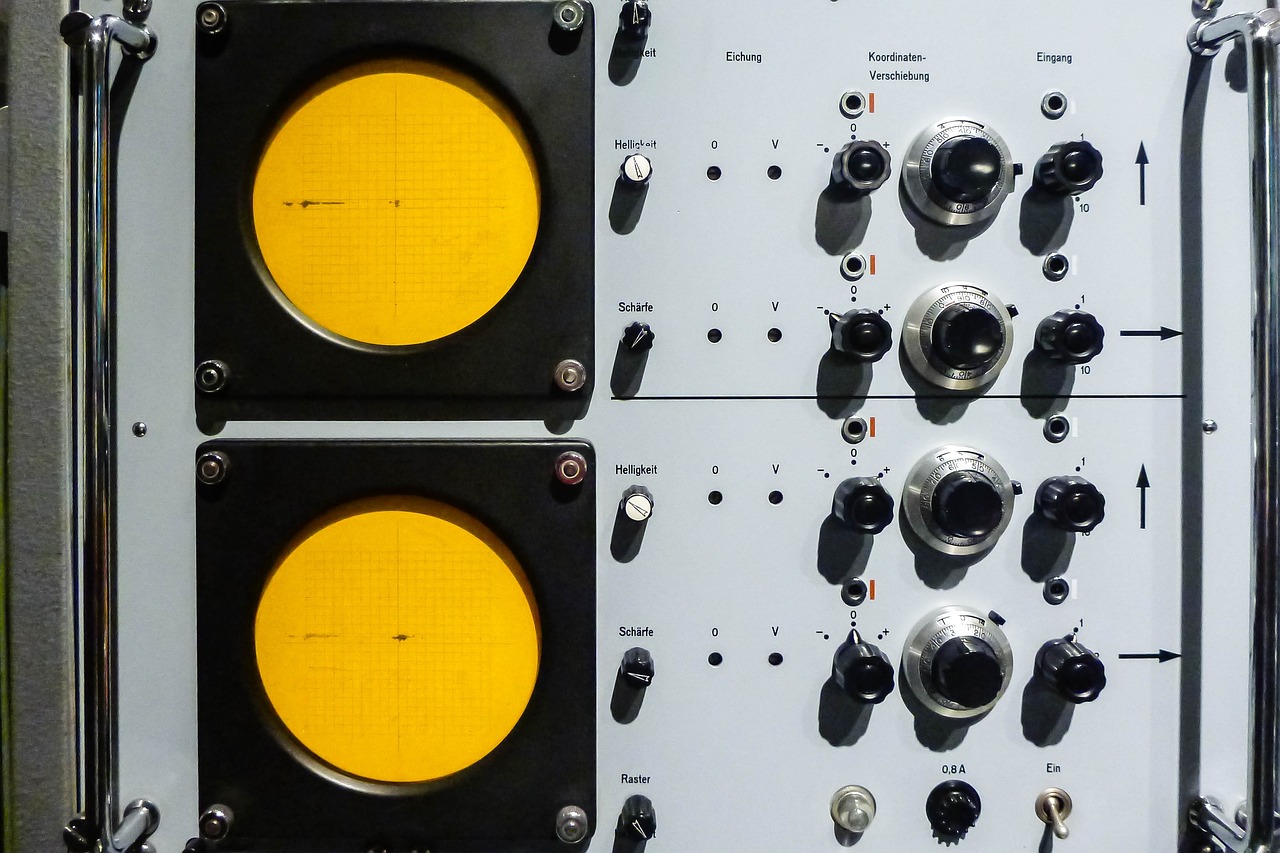
Interpreting Stochastic Oscillator Signals
Interpreting signals from the Stochastic Oscillator can feel like deciphering a secret code, but once you grasp the basics, it becomes an invaluable tool in your trading arsenal. The Stochastic Oscillator operates on the premise of momentum, which is essentially the speed at which a price is moving in a particular direction. This momentum is visually represented through two lines: %K and %D, which help traders identify potential entry and exit points. But how do you read these signals effectively?
One of the key elements to watch for is the concept of crossovers. A crossover occurs when the %K line crosses above or below the %D line. For instance, if the %K line crosses above the %D line, it could signify a buying opportunity, indicating that the asset is gaining momentum. Conversely, if the %K line crosses below the %D line, it may suggest a selling point, as it indicates a potential downturn. This is where the magic happens—traders can capitalize on these movements to make informed decisions.
Another important aspect to consider is divergence. Divergence occurs when the Stochastic Oscillator shows a different trend than the price action of the asset. For example, if the price of an asset is making new highs, but the Stochastic Oscillator is making lower highs, this could indicate that the upward momentum is weakening, potentially signaling a reversal. Understanding these patterns can be the difference between a successful trade and a costly mistake.
To enhance your interpretation skills, it’s crucial to familiarize yourself with the overbought and oversold levels. Typically, a reading above 80 indicates that an asset may be overbought, while a reading below 20 suggests it may be oversold. However, these levels are not absolute and should be considered in conjunction with other market conditions. Here’s a quick reference table to illustrate these levels:
| Indicator Level | Interpretation |
|---|---|
| Above 80 | Overbought - potential sell signal |
| Below 20 | Oversold - potential buy signal |
In summary, interpreting the signals from the Stochastic Oscillator requires a blend of analysis and intuition. By paying attention to crossovers, divergence, and overbought/oversold levels, traders can develop a keen sense of market momentum. Remember, the Stochastic Oscillator is just one tool in your trading toolkit. Combining it with other indicators and analysis methods can enhance its effectiveness, leading to better trading outcomes.
- What is the best time frame to use the Stochastic Oscillator? The best time frame often depends on your trading style. Day traders may prefer shorter time frames like 5 or 15 minutes, while swing traders might find daily or weekly charts more beneficial.
- Can the Stochastic Oscillator be used in all markets? Yes, the Stochastic Oscillator can be applied to various markets, including stocks, forex, and commodities. However, the effectiveness may vary based on market conditions.
- Is the Stochastic Oscillator suitable for beginners? Absolutely! The Stochastic Oscillator is relatively easy to understand and can provide valuable insights for traders at all levels.

Integrating Stochastic Oscillator into Trading Strategies
Integrating the Stochastic Oscillator into your trading strategies can be a game changer. It’s like having a secret weapon in your trading arsenal. By effectively utilizing this momentum indicator, you can enhance your decision-making process and develop a more robust trading approach. But how exactly do you weave this powerful tool into your existing strategies? Let’s explore the ways!
First off, it’s essential to understand that the Stochastic Oscillator doesn’t operate in isolation. It’s most effective when combined with other technical indicators. Think of it as a team player in a sports game; it shines brightest when working alongside others. For instance, pairing the Stochastic Oscillator with Moving Averages can provide deeper insights into market trends. While the Stochastic Oscillator reveals momentum, Moving Averages can help you identify the overall direction of the market. Together, they create a more comprehensive trading picture.
Moreover, integrating the Stochastic Oscillator into your strategy requires a bit of practice and experimentation. It’s crucial to backtest your approach using historical data. This process allows you to see how the Stochastic Oscillator would have performed in various market conditions. By doing so, you can refine your strategy, identify potential pitfalls, and build confidence in your trading decisions. Remember, every trader’s journey is unique, and what works for one may not work for another. So, don’t hesitate to tweak your strategy until it feels just right.
One effective way to integrate the Stochastic Oscillator is by setting clear entry and exit points. For example, you might decide to enter a trade when the %K line crosses above the %D line, indicating a potential upward momentum. Conversely, you could set an exit point when the %K line crosses below the %D line, signaling a possible downturn. This method provides a structured approach to trading, which can help minimize emotional decision-making.
Additionally, consider the importance of market context. The Stochastic Oscillator can generate false signals, especially in choppy or sideways markets. Therefore, it’s wise to incorporate market analysis into your strategy. Look for confirmation from other indicators or chart patterns before making a trade. This layered approach can significantly enhance the reliability of your trading signals.
In summary, integrating the Stochastic Oscillator into your trading strategy is about creating a synergy with other tools and methodologies. By combining it with indicators like Moving Averages or the Relative Strength Index (RSI), backtesting your strategy, and being mindful of market context, you can elevate your trading game. Remember, trading is not just about numbers; it’s about understanding the rhythm of the market and dancing to its tune!
- What is the best timeframe to use the Stochastic Oscillator?
The best timeframe largely depends on your trading style. Day traders may prefer shorter timeframes, while swing traders might opt for daily or weekly charts. - Can I use the Stochastic Oscillator alone?
While you can use it alone, combining it with other indicators enhances its effectiveness and reduces the likelihood of false signals. - How do I know if my Stochastic Oscillator settings are correct?
Experiment with different settings during backtesting. Common settings are 14 periods for %K and 3 for %D, but adjust based on your trading strategy.
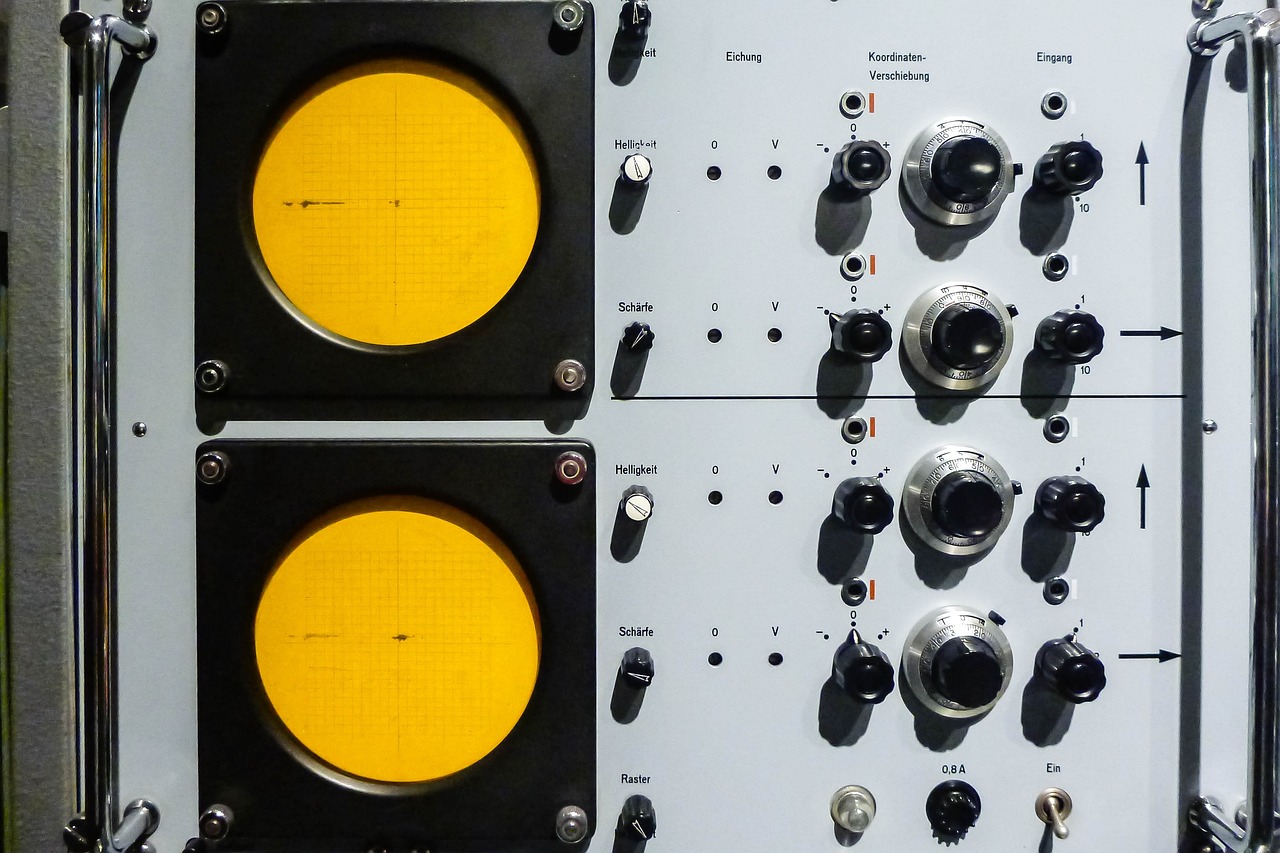
Combining with Other Indicators
When it comes to trading, relying solely on one indicator can be like trying to find your way through a dense fog without a map. The Stochastic Oscillator is a powerful tool, but its true potential shines when combined with other indicators. Think of it as a team of superheroes: each has unique strengths, and together they can tackle challenges far more effectively than alone. By integrating the Stochastic Oscillator with other technical indicators, traders can create a more robust trading strategy that enhances decision-making and increases the likelihood of success.
One of the most popular combinations is using the Stochastic Oscillator alongside moving averages. While the Stochastic Oscillator helps identify overbought and oversold conditions, moving averages provide a clearer picture of the overall trend. For instance, when the Stochastic Oscillator indicates that a security is oversold, and the price is above the moving average, it could signal a potential buying opportunity. Conversely, if the oscillator shows overbought conditions while the price is below the moving average, it may suggest a selling point. This synergy can help traders confirm their signals and make more informed decisions.
Another effective pairing is the Stochastic Oscillator with the Relative Strength Index (RSI). Both indicators measure momentum, but they do so in slightly different ways. By analyzing both, traders can gain deeper insights into market dynamics. For example, if the Stochastic Oscillator indicates a bullish crossover while the RSI is also below 30, it reinforces the idea that the asset is oversold and could be due for a reversal. This dual confirmation can provide traders with the confidence they need to enter or exit positions.
To illustrate how these combinations work, consider the following table that summarizes the potential outcomes when using the Stochastic Oscillator with moving averages and RSI:
| Indicator Combination | Market Condition | Potential Action |
|---|---|---|
| Stochastic Oscillator (oversold) + Moving Average (above) | Potential buying opportunity | Buy |
| Stochastic Oscillator (overbought) + Moving Average (below) | Potential selling opportunity | Sell |
| Stochastic Oscillator (bullish crossover) + RSI (below 30) | Strong buy signal | Buy |
| Stochastic Oscillator (bearish crossover) + RSI (above 70) | Strong sell signal | Sell |
In summary, combining the Stochastic Oscillator with other indicators like moving averages and RSI can significantly enhance your trading strategy. This multifaceted approach allows traders to confirm signals and make more informed decisions, ultimately leading to better trading outcomes. Remember, in the world of trading, having a well-rounded toolkit can make all the difference between success and failure.
- What is the Stochastic Oscillator?
The Stochastic Oscillator is a momentum indicator that compares a security's closing price to its price range over a specific period, helping traders identify overbought or oversold conditions.
- How do I calculate the Stochastic Oscillator?
The calculation involves a straightforward formula that takes into account the current closing price, the lowest low, and the highest high over a specified period.
- Can I use the Stochastic Oscillator alone?
While it can be used alone, combining it with other indicators like moving averages or RSI is recommended for a more comprehensive analysis.
- What are the key signals to look for with the Stochastic Oscillator?
Key signals include crossovers, divergence, and overbought/oversold conditions, which can indicate potential market reversals.

Backtesting Your Strategy
Backtesting your trading strategy is like taking a time machine back to see how your approach would have fared in the past. It’s not just about guessing where the market will go next; it’s about using historical data to evaluate how effective your strategy is. By simulating trades based on past market conditions, you can gain valuable insights into the potential profitability and risks associated with your trading decisions.
Imagine you're a chef perfecting a new recipe. You wouldn't just throw ingredients together and hope for the best, right? You'd want to test it out, tweak it, and see how it turns out before serving it to your guests. Similarly, backtesting allows traders to refine their strategies, ensuring they are not only viable but also robust enough to withstand different market scenarios.
To effectively backtest your strategy using the Stochastic Oscillator, follow these key steps:
- Gather Historical Data: Start by collecting historical price data for the asset you wish to trade. This data should include the closing prices over a significant period, ideally covering different market conditions.
- Define Your Strategy: Clearly outline the rules of your trading strategy. Specify when to enter and exit trades based on the signals generated by the Stochastic Oscillator.
- Simulate Trades: Using the historical data, apply your strategy to simulate trades. Keep track of your hypothetical trades, noting the entry and exit points, as well as the outcomes.
- Analyze Performance: After simulating your trades, analyze the results. Look at metrics such as win rate, average profit per trade, and maximum drawdown. This analysis will help you understand the effectiveness of your strategy.
One effective way to visualize your backtesting results is through a table. Here’s a simple example of how to present your findings:
| Trade Number | Entry Price | Exit Price | Profit/Loss | Stochastic Signal |
|---|---|---|---|---|
| 1 | $50 | $55 | +$5 | Overbought |
| 2 | $55 | $52 | -$3 | Oversold |
| 3 | $52 | $60 | +$8 | Overbought |
By keeping detailed records of your trades, you can identify patterns and make informed adjustments to your strategy. It’s essential to be honest and objective during this process. Just like a sports team reviews game footage to improve their performance, you should critically analyze your backtesting results to enhance your trading strategy.
In conclusion, backtesting is not just a step in the trading process; it’s a crucial element that can significantly improve your chances of success in the markets. By understanding how your strategy would have performed under various conditions, you can build confidence and make more informed trading decisions moving forward.
- What is backtesting? Backtesting is the process of testing a trading strategy using historical data to see how it would have performed in the past.
- Why is backtesting important? It helps traders identify the strengths and weaknesses of their strategies, allowing them to make informed adjustments before risking real capital.
- How do I backtest my strategy? Collect historical data, define your trading rules, simulate trades based on those rules, and analyze the results.
Frequently Asked Questions
- What is the Stochastic Oscillator?
The Stochastic Oscillator is a popular momentum indicator used in trading. It compares a security's closing price to its price range over a specific period. This helps traders identify whether a security is overbought or oversold, giving insights into potential market reversals.
- How do I calculate the Stochastic Oscillator?
Calculating the Stochastic Oscillator involves a simple formula: %K (Current Close - Lowest Low) / (Highest High - Lowest Low) * 100. Here, you need to determine the highest high and lowest low over a set period, typically 14 days, to derive the %K value. The %D line is then calculated as a moving average of the %K line.
- What are the components of the Stochastic Oscillator?
The Stochastic Oscillator consists of two main lines: the %K line and the %D line. The %K line indicates the current closing price relative to the price range, while the %D line is a smoothed moving average of the %K line, which helps to reduce noise and provide clearer signals.
- How can I interpret signals from the Stochastic Oscillator?
Interpreting signals from the Stochastic Oscillator involves looking for crossovers between the %K and %D lines. A bullish signal occurs when the %K line crosses above the %D line, suggesting potential upward momentum. Conversely, a bearish signal happens when the %K line crosses below the %D line, indicating potential downward movement.
- Can I combine the Stochastic Oscillator with other indicators?
Absolutely! Combining the Stochastic Oscillator with other technical indicators, like moving averages or the Relative Strength Index (RSI), can enhance your trading strategy. This combination provides a more comprehensive view of market conditions and improves the accuracy of your trading signals.
- What is the importance of backtesting my strategy?
Backtesting your trading strategy using historical data allows you to evaluate its effectiveness. By applying the Stochastic Oscillator to past market conditions, you can refine your approach and gain confidence in your trading decisions. It’s like rehearsing for a play; you want to make sure everything flows smoothly before the big performance!



